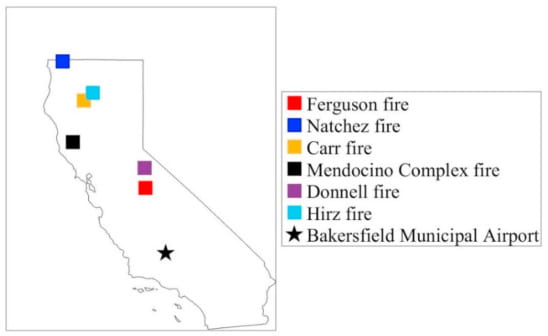“The impact of wildfire smoke on ozone production in an urban area: Insights from field observations and photochemical box modeling”

In this recently published paper, postdoctoral research associate Matt Ninneman and Dan Jaffe examined the effect of wildfire smoke on ozone (O3) production at an urban site in Bakersfield, CA. They used data from smoky and non-smoky weekdays in summer 2018. During this period, there were several active wildfires in northern California. The authors utilized a photochemical box model to analyze the data. The box model simulations indicate that maximum O3 production rates were about two times faster on smoky weekdays compared to non-smoky weekdays. Model sensitivity tests for smoky weekdays showed that (1) O3 was sensitive to both oxides of nitrogen (NOx) and volatile organic compounds (VOCs) and (2) aldehydes significantly affected O3 formation. Their results suggest that “a combination of anthropogenic VOC and NOx reductions will be the most effective strategy for decreasing O3 on typical non-smoky days.” However, only reductions in NOx are expected to have a significant impact on lowering O3 concentrations on typical smoky days, since VOC levels in smoke plumes are high.
Read the full paper in Atmospheric Environment
“Observed relationship between ozone and temperature for urban nonattainment areas in the United States”
In a second recently published paper, Matt Ninneman and Dan Jaffe investigated the observed relationship between ground-level ozone (O3) and temperature from 1995 to 2020 at 20 U.S. cities that violate regulatory requirements for ground-level O3. They found that the median slope of the ground-level O3 versus temperature relationship declined in all regions, and the correlation between ground-level O3 and temperature weakened over time in the eastern and midwestern U.S. In the western U.S., ground-level O3 has declined more slowly and the correlation between ground-level O3 and temperature has changed negligibly due to the combined influence of high background O3 and wildfire smoke. This suggests that meeting regulatory requirements for ground-level O3 in the western U.S. will be more challenging than in other parts of the country.